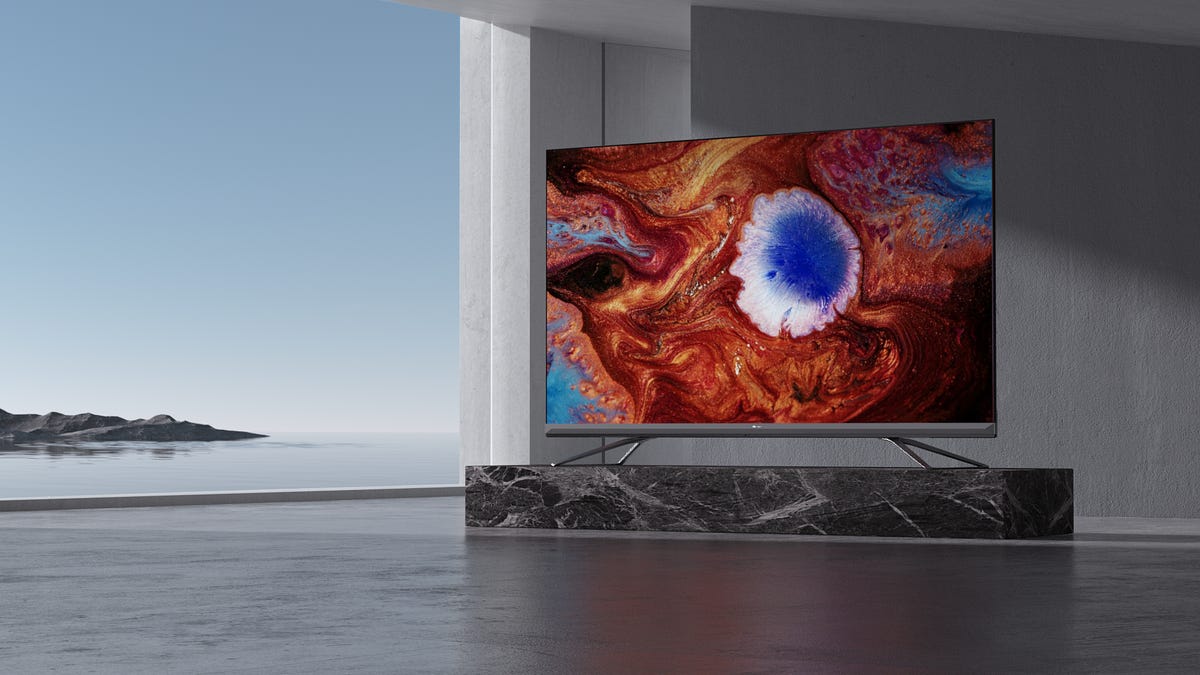Hisense debuts the first dual-cell LCD TV at 75 inches, $3,500
It's joined by other, less expensive 2021 models with full-array local dimming, quantum dots and Android TV -- as well as an 8K Roku TV.

The TV with a dual-cell LCD display is from Hisense and will ship this summer.
Years in the making, the latest TV tech to challenge the supremacy of OLED will finally go on sale later this year. Called dual-cell LCD and only available from Hisense, it promises better image quality than any LCD-based TV yet. And like most new TV technologies it won't come cheap, appearing only in a 75-inch size and shipping this summer for a cool $3,500.
Hisense first demonstrated its intriguing dual-cell tech in 2019. The TV layers two liquid crystal modules one on top of the other inside a single cabinet, making possible improved black levels and contrast, the most important ingredients in TV image quality. The best picture is currently available on OLED TVs, which start at around $3,300 for a 77-inch size, so I'm eager to see how dual-cell tech stacks up for a similar price.
Hisense also introduced another high-end 75-inch model, a Roku-powered TV with 8K resolution for a few hundred less that's also shipping this summer. Notably, it's beating rival TCL to the 8K punch -- TCL announced an 8K Roku TV at CES in January but has yet to provide pricing and availability.
China-based Hisense is the fifth-best selling TV brand in the US, trailing Samsung, TCL, Vizio and LG. We haven't reviewed any of its TVs recently but on paper they provide solid features at competitive prices, and they're often featured in Black Friday sales. With these two more-expensive TVs the company is making a move toward the higher-end, although it remains to be seen how many consumers in this price range will want a Hisense.
Here's a look at the upper end of the lineup.
Hisense 2021 TV lineup highlights
| Series | Size | Price | Resolution | Smart TV | Light output (nits) |
|---|---|---|---|---|---|
| U9DG (Dual-cell) | 75-inch | $3,500 | 4K | Android TV | 1,000 |
| U800GR | 75-inch | $3,200 | 8K | Roku TV | 1,000 |
| U8G | 65-inch | $1,300 | 4K | Android TV | 1,500 |
| U8G | 55-inch | $950 | 4K | Android TV | 1,500 |
| U7G | 75-inch | $1,400 | 4K | Android TV | 1,000 |
| U7G | 65-inch | $950 | 4K | Android TV | 1,000 |
| U7G | 55-inch | $750 | 4K | Android TV | 1,000 |
All of the TVs above feature full-array local dimming and quantum dot color to go with prodigious light output -- a combo that wrings the best picture quality out of LCD tech in my experience. (Unlike rivals, Hisense isn't touting mini-LED, however). The U9DG claims "over 2 million dimming zones," far outpacing comparable local-dimming TVs, because each pixel of one LCD module basically acts as an individual zone. That module handles the luminance information (black and white only), while the second handles color. The 8K U8000GR has 180 dimming zones.
Read more: Look out, OLED: Hisense unveils dual-LCD TV tech
Beyond the high-end U9DG and U8000GR models, the rest of Hisense's TVs are much more affordable. I'm most intrigued by the price-to-picture possibilities of the U8G (shipping in May), which can get brighter than any of the others at 1,500 nits, and the U7G (shipping this summer). Aside from light output and number of dimming zones (up to 360 and 180, respectively) the two are very similar on paper, with gaming extras like 4K/120 fps input, Variable Refresh Rate and Auto Game mode, as well as the native 120Hz panels and Dolby Vision HDR. Those specs put the TVs at a level similar to the TCL 6-Series, Sony X90J and Vizio PQ series.
One item missing from the spec sheet is Google TV, the latest version of the search giant's smart TV platform that is found on TVs from rivals including Sony and TCL. Instead they run the older Android TV. When I asked whether its new TVs would be upgraded to Google TV, Hisense's rep told me, "The 2021 lineup will continue using the Android TV operating system." I don't expect an upgrade anytime soon.

